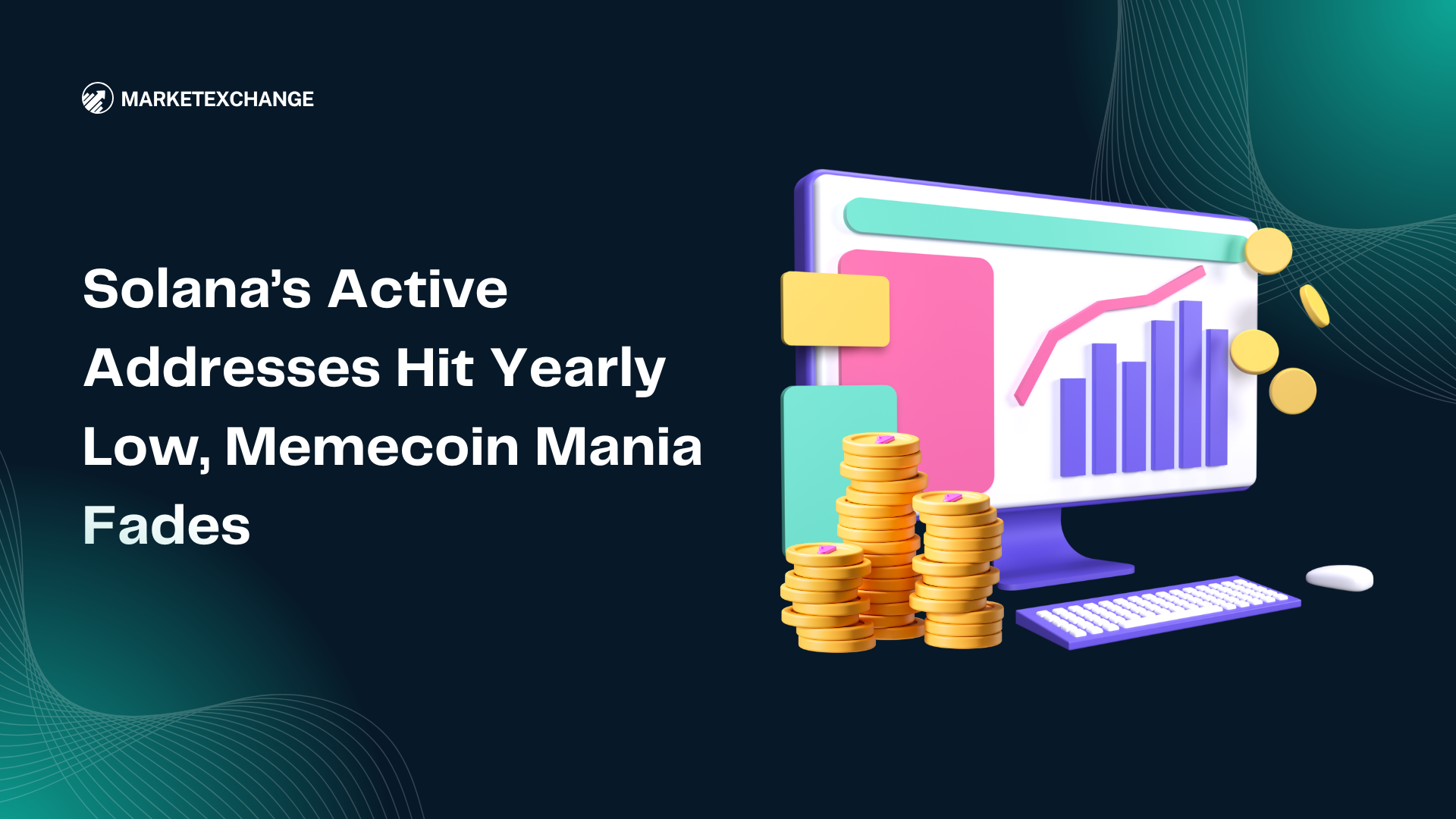
Solana’s red-hot retail moment is cooling. The number of active Solana addresses has fallen to a 12-month low around 3.3 million, down from about 9 million in January 2025, as speculative memecoin trading that once flooded the network has tapered off, according to new tallies shared this week.
Why is activity dropping?
The story starts with what powered Solana’s surge: memecoins. Research earlier this year showed how deeply meme-token trading permeated Solana’s on-chain economy. Messari estimated memecoins accounted for as much as 70% of DEX volume in February 2025, a staggering concentration that supercharged address counts and transactions while the hype lasted. As launches cooled and returns normalized, activity naturally ebbed.
You could see the boom in other data points too. In Q1 2025, Solana’s average daily spot DEX volume climbed 41% quarter over quarter to $4.6B, with a single-day record of $36B on Jan. 18—a frenzy Messari linked directly to the memecoin revival. When that impulse fades, so does casual user traffic.
What the slowdown means
A decline in active addresses is not the same thing as a decline in economic throughput. Solana’s fee and MEV dynamics are unusual: even with micro-fees, heavy use of priority fees during peak periods can translate into meaningful revenue for validators. In fact, Messari’s latest State of Solana (Q3 2025) notes the network generated $222.3M in “real economic value” that quarter (base fees + priority fees + tips)—evidence that some fundamentals remain intact even as retail traffic cools.
Still, fewer active addresses can have second-order effects. DEXs and launchpads that thrived on rapid-fire token issuance may see thinner order books; NFT and social-fi projects reliant on “drive-by” traffic could feel the lull. And if fewer newcomers arrive daily, SOL price narratives have to rely more on stickier use cases—DeFi credit markets, payments, and enterprise integrations—rather than viral token launches alone.
What to watch next on Solana
- Mix of volume. With the memecoin share shrinking, does DEX activity pivot toward majors (SOL, wBTC, wETH, stablecoins) or simply contract? Sustained depth in non-meme pairs would suggest a healthier base. (Messari’s earlier work shows how volume composition on Solana swings quickly with narrative.)
- Retention vs. churn. The critical metric after hype cycles is how many new wallets keep transacting weekly. If address counts stabilize and repeat usage rises—think payroll, payments, perps, restaking—Solana can trade speculative churn for durable cohorts.
- Builder pipeline. Grants and venture rounds announced over the summer aimed to diversify Solana’s app mix. Watch for launches that emphasize utility (payments, RWAs, infra) over “number go up” token games; those tend to bring steadier users.
- Macro crypto flows. If broader risk appetite returns (e.g., improving ETF flows into BTC/ETH), some capital typically rotates down the stack, lifting L1s like Solana. But “beta” alone won’t restore the January-style address counts without a fresh retail catalyst.
Why this matters beyond Solana
The network’s swing from “all-time buzz” to “activity reset” is a cautionary tale for every high-throughput chain: user numbers tied to speculative booms can be ephemeral. Chains that translate attention spikes into sticky behaviors—cheap payments, fast settlement, low-friction consumer apps—are better positioned when the party ends. Solana’s architecture still gives it speed and cost advantages; the question is how quickly the ecosystem refills the funnel with practical use.
The bottom line
- Active addresses on Solana fell to ~3.3M, the lowest in a year, after peaking near 9M in January—mirroring the cool-down in memecoin speculation that once dominated on-chain activity.
- Earlier in 2025, memecoins drove outsized DEX volume—up to 70% of flows by Messari’s estimate—helping explain the boom-and-bust in user counts.
- Fundamentals aren’t binary: Q3 2025 “real economic value” hit $222M, showing that fee-driven revenue can persist even as casual traffic ebbs. The next phase for Solana is converting last cycle’s attention into durable, utility-led demand.